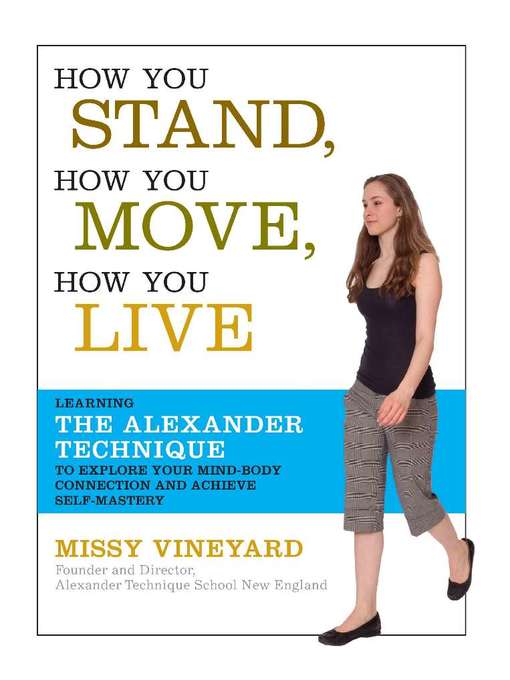How You Stand, How You Move, How You Live
Learning the Alexander Technique to Explore Your Mind-Body Connection and Achieve Self-Mastery
-
Creators
-
Publisher
-
Release date
March 24, 2008 -
Formats
-
Kindle Book
-
OverDrive Read
- ISBN: 9780738213057
- File size: 28207 KB
-
EPUB ebook
- ISBN: 9780738213057
- File size: 28207 KB
-
-
Languages
- English
-
Reviews
-
Publisher's Weekly
April 30, 2007
Vineyard, founder and director of the Alexander Technique School of New England, presents a thorough introduction and guide to the posture and movement method that's been used for more than a century to improve performance, reduce chronic pain and heal injuries. In this volume, "the first authoritative, comprehensive and all-new guide" to the technique in 20 years, Vineyard shows readers how understanding and improving habits of movement like "head-neck coordination" and even sitting "help you achieve self-mastery," here defined as the "self-understanding" and "bodily control" needed to "identify and release our harmful reactions to pain, fear, and anxiety." The upshot: a healthier, more resilient mind and body. Through numerous case studies and a handful of exercises, Vineyard teaches self-awareness and the primary Alexander Technique skills: conscious inhibition-"quieting your inner conversation"-and "directing," a heightened sense of space and the body's place in it. Vineyard details the internal processes which govern movement, and the factors that lead to "maladaptive change in muscle activity"; she also has tips for troubleshooting common problems like pain and weakness. Those already familiar with the Alexander Technique or other mind-body methods will get the most out of this book, though newcomers will find it a sound introduction; unfortunately, all readers will lose patience with Vineyard's case study overkill. -
Library Journal
June 15, 2007
Vineyard (founder & director, Alexander Technique Sch. of New England) provides a clear introduction to the Alexander Technique, guiding readers through a series of self-experiments centered on compelling case studies from her practice. In an especially powerful lesson on conscious inhibition (a core Alexander Technique skill), Vineyard teaches readers to activate the prefrontal cortex in order to learn the difference between feeling and thinking. Because she effectively builds the reader's skills during the course of the book, rather abstract ideas about space and direction seem natural and accessible when they are introduced. Although this comprehensive guide could replicate the experience of sessions with a certified instructor, some readers may be overwhelmed by its text-heavy format and focus on neuroscience. Those who wish to dispense with the philosophy (at least initially) and just hit the mat might be better served by Richard Craze's "Teach Yourself Alexander Technique" or Robert M. Rickover's "Fitness Without Stress". Recommended for large alternative-health collections.Blanche Angelo, Livermore P.L., CACopyright 2007 Library Journal, LLC Used with permission.
-
Formats
- Kindle Book
- OverDrive Read
- EPUB ebook
subjects
Languages
- English
Loading
Why is availability limited?
×Availability can change throughout the month based on the library's budget. You can still place a hold on the title, and your hold will be automatically filled as soon as the title is available again.
The Kindle Book format for this title is not supported on:
×Read-along ebook
×The OverDrive Read format of this ebook has professional narration that plays while you read in your browser. Learn more here.


